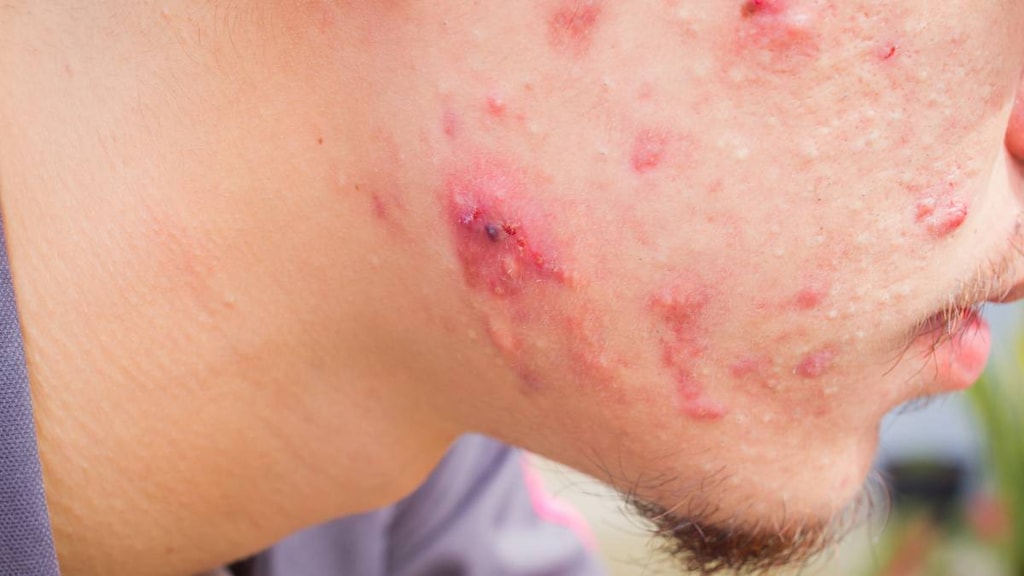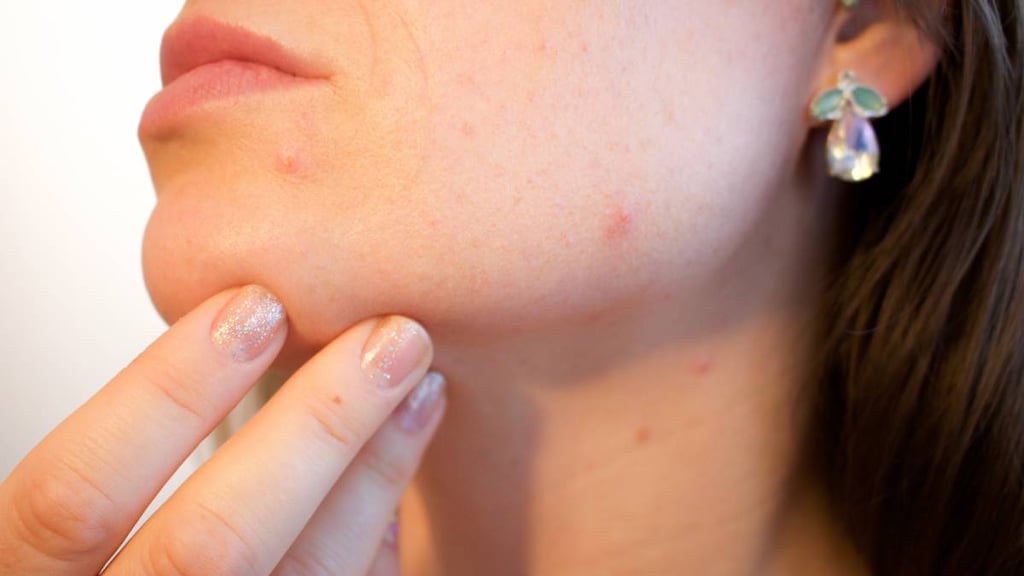Dosage Forms
Excipient information presented when available (limited, particularly for generics); consult specific product labeling. [DSC] = Discontinued product
Gel, topical:
Aktipak: Erythromycin 3% and benzoyl peroxide 5% (60s) [DSC] [supplied with diluent containing alcohol]
Benzamycin: Erythromycin 3% and benzoyl peroxide 5% (46.6 g) [contains alcohol 20%]
Generic: Erythromycin 3% and benzoyl peroxide 5% (23.3 g, 46.6 g)
Use: Labeled Indications
Topical control of acne vulgaris
Contraindications
Hypersensitivity to erythromycin, benzoyl peroxide, or any component of the formulation
Dosage and Administration
Dosing: Adult
Acne: Topical: Apply twice daily, morning and evening.
Dosing: Geriatric
Refer to adult dosing.
Dosing: Pediatric
Acne vulgaris: Note: Guidelines recommend as monotherapy for mild acne or in combination with topical retinoids or systemic antibiotics for moderate to severe acne (AAD [Zaenglein 2016]).
Children ≥7 years and Adolescents: Limited data available in <12 years (Eichenfield 2013): Topical: Apply to affected area(s) twice daily, in the morning and in the evening.
Administration
For external use only; avoid applying to inside nose, mouth, eyes, and mucous membranes. Apply to clean, dry skin. Wash hands before and after use.
Aktipak: Mix right before each use.
Storage
Benzamycin: Prior to dispensing, store at 20°C to 25°C (68°F to 77°F). Once reconstituted and dispensed, patient should store in refrigerator, between 2°C to 8°C (36°F to 46°F) and use within 3 months. Do not freeze.
Drug Interactions
Clindamycin (Topical): Erythromycin (Topical) may diminish the therapeutic effect of Clindamycin (Topical). Avoid combination
Dapsone (Topical): Benzoyl Peroxide may enhance the adverse/toxic effect of Dapsone (Topical). Specifically, the use of these agents in combination may cause skin and facial hair to temporarily turn a tan or yellow/orange color. Monitor therapy
Isotretinoin (Topical): Benzoyl Peroxide may diminish the therapeutic effect of Isotretinoin (Topical). Consider therapy modification
Adverse Reactions
Frequency not always defined. Also see individual agents.
1% to 10%:
Dermatologic: Xeroderma (3% to 8%), urticaria (3%), pruritus (2% to 3%), burning sensation of skin (1% to 3%), erythema (1% to 3%), stinging of the skin (1% to 3%), skin photosensitivity (1%), desquamation, oily skin, skin discoloration, skin tenderness, swelling of skin
Ophthalmic: Blepharitis (≤2%)
Warnings/Precautions
Concerns related to adverse effects:
- Bleaching effects: May bleach hair or colored fabric.
- Skin irritation: Discontinue use if severe skin irritation or redness occurs.
- Superinfection: Prolonged use may result in fungal or bacterial superinfection, including C. difficile-associated diarrhea (CDAD) and pseudomembranous colitis; CDAD has been observed >2 months postantibiotic treatment. Stop the drug if significant diarrhea occurs.
Concurrent drug therapy issues:
- Sulfone products: Concomitant use of benzoyl peroxide with sulfone products (eg, dapsone, sulfacetamide) may cause temporary discoloration (yellow/orange) of facial hair and skin. Application of products at separate times during the day or washing off benzoyl peroxide prior to application of other products may avoid skin discoloration (Dubina 2009).
- Topical acne products: Use concomitant topical acne therapy with caution; cumulative irritancy may occur.
Other warnings/precautions:
- Appropriate use: For external use only; avoid contact with mucous membranes and eyes.
Pregnancy
Pregnancy Risk Factor
C
Pregnancy Considerations
Animal reproduction studies have not been conducted with this combination. Refer to individual monographs.
Patient Education
- Discuss specific use of drug and side effects with patient as it relates to treatment. (HCAHPS: During this hospital stay, were you given any medicine that you had not taken before? Before giving you any new medicine, how often did hospital staff tell you what the medicine was for? How often did hospital staff describe possible side effects in a way you could understand?)
- Patient may experience dry skin. Have patient report immediately to prescriber severe skin irritation or signs of Clostridium difficile (C. diff)-associated diarrhea (abdominal pain or cramps, severe diarrhea or watery stools, or bloody stools) (HCAHPS).
- Educate patient about signs of a significant reaction (eg, wheezing; chest tightness; fever; itching; bad cough; blue skin color; seizures; or swelling of face, lips, tongue, or throat). Note: This is not a comprehensive list of all side effects. Patient should consult prescriber for additional questions.
Intended Use and Disclaimer: Should not be printed and given to patients. This information is intended to serve as a concise initial reference for health care professionals to use when discussing medications with a patient. You must ultimately rely on your own discretion, experience, and judgment in diagnosing, treating, and advising patients.




